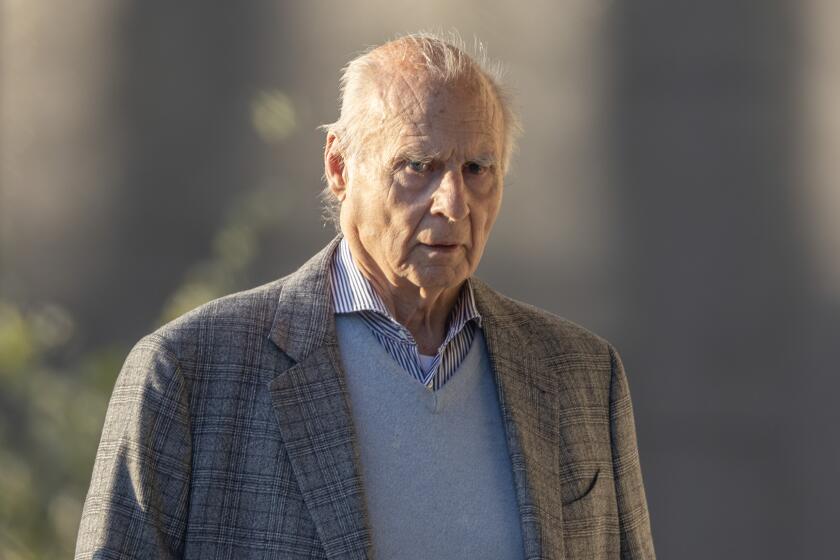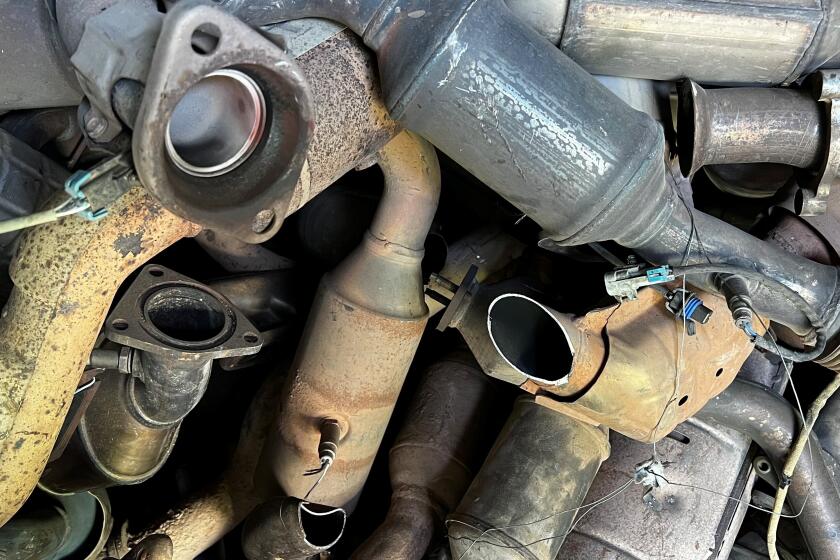After the Unrest, Will the Response Meet the Task?
- Share via
Efforts to rebuild Los Angeles are under way after the recent devastating riots, but questions remain as to whether the commitments will be large and enduring enough to correct the basic social conditions that fed the upheavals.
After the Watts riots exploded in August, 1965, the McCone Commission warned that if the breach between the city’s haves and have-nots was allowed to persist, the 1965 riots might be “only a curtain-raiser for what could blow up one day in the future.”
It was not long before rioting hit Los Angeles again. In 1970 and 1971, bloody but smaller disorders erupted in East Los Angeles after demonstrations by Mexican-Americans lashing out at the Vietnam War, police brutality and social inequities.
In the wake of the April 29-May 1 riots, which were touched off by the not guilty verdicts in the beating of Rodney G. King by four Los Angeles police officers, there is pessimism among some community leaders who fear that the lessons of the previous disorders have not been learned.
Supervisor Gloria Molina and a coalition of other Latino community leaders have fanned out from Pacoima to Pomona to stimulate a dialogue on the needs of various communities throughout the county. The results of these meetings will be formulated into a plan of action and presented to officials such as Mayor Tom Bradley and Rebuild L.A. leader Peter V. Ueberroth.
But Molina acknowledges that she is not optimistic that fundamental economic and social changes will emerge.
“I’m not so sure we are prepared to understand the lessons we are seeing today,” Molina said. “I think there’s an unfortunate kind of glamour that’s attached to giving lip service to these disturbances now, but there will be few people who will be involved in the long term. I’m afraid we’re going to see these things (riots) go on.”
But others disagree. Alicia Zambrano, president of the Watts/South-Central Neighborhood Council, said: “This time it’s not going to be the same as the riots in ‘65, when people talked and didn’t do much. We’re very sure that things are going to change.”
The problems highlighted by the McCone Commission resemble those mentioned after the April riots: high jobless rates, inadequate schools, crowded housing, poor living conditions and police brutality.
The poverty rate for families in South Los Angeles is higher today than at the time of the Watts riots and nagging unemployment contributes heavily to the problem.
“Probably the principal failure of implementation (of the McCone report) is in the jobs area,” said Warren Christopher, the Los Angeles lawyer who was the McCone Commission’s vice chairman and who led the 1991 inquiry into the Los Angeles Police Department after the beating of Rodney G. King. “That was the hardest, trying to give people in South-Central some stake so they don’t have this ‘nothing to lose’ philosophy.”
The weak economic conditions complicate the process of revitalization. Some suggest that fostering small locally owned businesses is crucial to creating stronger ties to the neighborhood. “We need to give opportunities for minorities to open their own businesses in their own communities,” Zambrano said.
City Councilman Mike Hernandez said: “We must build job training centers, teach English so people can get acclimated and put kids in child-care centers so people can work.”
Although some feel these services should be federally funded, others say the answer lies elsewhere.
“I’m obviously convinced that government has its responsibility. . . . But if we’re talking about meaningful change, it’s not going to happen in government,” said City Councilman Richard Alatorre, who called on the private sector to get involved in the rebuilding.
After Watts, there was initial government spending for programs to treat the symptoms of poverty, but no long-term commitment to combat the basic problems.
“What we had after 1965 was a quick rush, where there were all kinds of expressions of goodwill and promises made,” said John Mack, president of the Los Angeles Urban League.
Although the 1965 riots were confined to Watts and involved African-Americans, the McCone Commission recognized that its findings were relevant to other communities as well: “Our major conclusions and recommendations regarding the Negro problem in Los Angeles apply with equal force to the Mexican-Americans, a community which is almost equal in size to the Negro community and whose circumstances are similarly disadvantageous and demand equally urgent treatment.
“That the Mexican-American community did not riot is to its credit; it should not be to its disadvantage,” it added.
At the time of the 1965 riots, Latinos made up less than 2% of Watts’ population and 10% of the entire city of Los Angeles. Figures from the 1990 census show that Latinos make up half the population of South Los Angeles, where the recent unrest was centered, and 40% of the city.
Dionicio Morales, a longtime leader in the Mexican-American community, said: “What we didn’t learn after the earlier riots is to take the necessary preventive steps to establish long-range programs that would curtail frustration and hostility because of unmet needs in the Hispanic community.”
Morales, chief executive officer of the Mexican-American Opportunity Foundation, said: “We respond to crisis with great emotion, but after the smoke settles we forget about it.”
Some worry that East Los Angeles will be ignored because it was not set aflame.
“Our concern now is that we will suffer because we were calm during the riots,” said Frank Villalobos, an architect who heads Barrio Planners in East Los Angeles. “We have to call attention to the fact that the Whittier (Boulevard) riots happened six years after the Watts riots did.
“The city has to be responsible in rebuilding. It has to put the urgent attention where it needs to, but we can’t ignore areas that are on the verge. The Eastside has not had major new development since the 1940s.”
David Hayes-Bautista, director of UCLA’s Chicano Studies Research Center, said East Los Angeles was quiet during the latest riots because most families are established and “Mexican immigrants tend to flow along family community networks . . . which put brakes on that type of behavior.”
Los Angeles police reported that about half of the riot-related arrests involved Latinos, but most incidents occurred in transient communities, Hayes-Bautista said.
Among heavily Latino districts, looting and rioting were worst in South Los Angeles and Pico-Union, a community of Central American immigrants that is less established than older enclaves.
More than half of Pico-Union residents entered the country during the last decade, according to census figures. Almost 68% of the community is Latino, primarily Salvadoran. Because so many of the Central Americans are refugees, Hayes-Bautista said, “they do not have the same networks” and lack a vested interest in the community.
Carlos Vaquerano, human rights coordinator of the Central American Refugee Center in Pico-Union, cited employment, crowded housing, lack of recreation areas, rights of undocumented immigrants and problems with the judicial system as major issues.
Molina said she is learning about the priorities of the various Latino communities.
“When you deal with different Latino communities, a lot of needs are very similar. But then you also see that some things are more important in one place than another.
“In East L.A., immigrants’ rights are not as important as education . . . but when you go to Pico-Union, you’re talking about new immigrant communities with different needs,” Molina said.
Mack’s Urban League and Morales’ Mexican-American Opportunity Foundation, among others, are working to put programs into place to attack the festering urban problems.
But “the jury is still out,” Mack said, “as to whether enough residents of our city and leaders are going to recognize that the future of our city depends on solving these problems. Regrettably, too few learned the bitter lesson the last time.”
More to Read
Sign up for Essential California
The most important California stories and recommendations in your inbox every morning.
You may occasionally receive promotional content from the Los Angeles Times.










